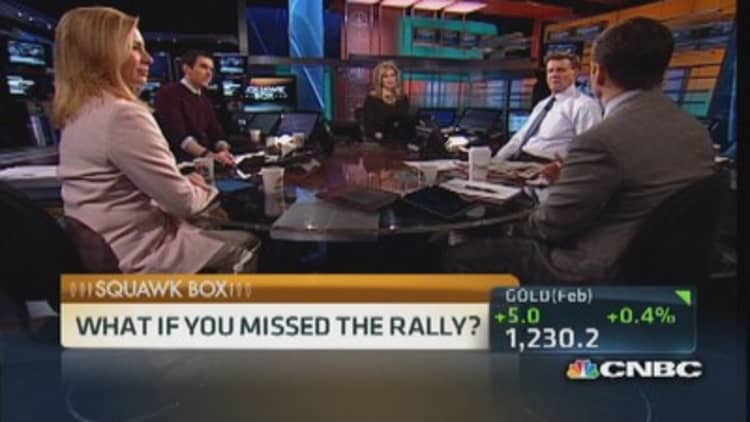After a stellar run in 2013, you may be wondering how it can get even sweeter than a nearly 30 percent annual return, which is what you would have gained holding the SPDR S&P 500 ETF (SPY) last year.
One advantage of ETFs is that, because most are pegged to indexes and not actively managed, their low costs can be passed on to you, the investor. The expense ratio for the SPY, for example, is 0.09 percent; that's 90 cents for every $1,000 invested.
However, not all ETFs track indexes track plain vanilla indexes. Here are three somewhat offbeat ETFs that follow different paths.
Tracking the titans
Want to invest like hedge-fund titan Ray Dalio? What about Carl Icahn? There's an ETF for that.
The Global X Guru fund (GURU) tracks large hedge funds' portfolios, concentrating on U.S.-listed securities.
The good: GURU has rocketed 67 percent since its inception in 2012.
The bad: Its positions aren't entirely timely, since they are rebalanced quarterly.
Hedge funds aren't required to reveal their positions until 45 days after each calendar quarter ends. As a result, GURU's securities may be outdated by as many as 135 days.
The ugly: It doesn't necessarily reflect all of a hedge fund's strategy because the funds are only required to disclose their publicly-traded stock positions. Many funds hedge using derivatives, like options and futures, which they are not required to disclose.
Tracking the untapped
Looking to tap a virtually untapped market?
Try db X-trackers Harvest CSI 300 China A-Shares ETF (ASHR). This is a new fund, debuting in November of last year, that gives investors direct access to China's A-shares market, which consists of mainland Chinese companies that have been closed off to most foreign investors.
ASHR isn't the first of its kind. The Market Vectors China ETF (PEK) has provided access, but it's often traded at significant premiums.
Before buying ASHR, you should ask yourself whether you want to be exposed to the China A-shares market for reasons other than its exclusivity.
Consider these points:
- Most prominent Chinese companies don't list in mainland China: they list in Hong Kong. If all you want is exposure to large-cap Chinese companies, you might want to try the more liquid iShares China Large Cap (FXI).
- If you're looking for access to the currently-hot internet sector, almost all Chinese internet companies list in the U.S. ConsiderPowerShares Golden Dragon China ETF (PGJ).
- State-owned enterprises (SOEs) make up a majority of the A-shares market. Since they are largely controlled by the Chinese government, these companies have traditionally been light on transparency.
- ASHR isn't cheap. It has a relatively high expense ratio of 1.08 percent.

The ETF is essentially flat since its launch. Deutsche Bank, however, has filed plans with the SEC to debut even more funds with access to A-shares small caps and sectors.
Tracking buybacks
Stock buybacks are at multi-year highs, juicing major indices to new records. Interested in riding the buyback bonanza?
The PowerShares Buyback Achievers fund (PKW) is one way to play it. Holdings include companies that have repurchased at least five percent of their outstanding shares in the previous year. Large-cap stocks like Oracle and Amgen dominate the portfolio, which has a specific bias toward consumer cyclical stocks that make up roughly a third of the constituents. The fund rallied 44 percent last year, outperforming the broader market's roughly 30 percent gain.
Still to come
ETF debuts to watch for in 2014: Van Eck's pure play on Puerto Rico debt and WisdomTree's five currency-hedged Japan sector funds. The WisdomTree currency-hedged Japan ETF (DXJ) tripled its assets in 2013, collecting a staggering $9.7 billion.
- By CNBC's Bob Pisani and Kristen Scholer. Follow Kristen on twitter @KristenScholer




